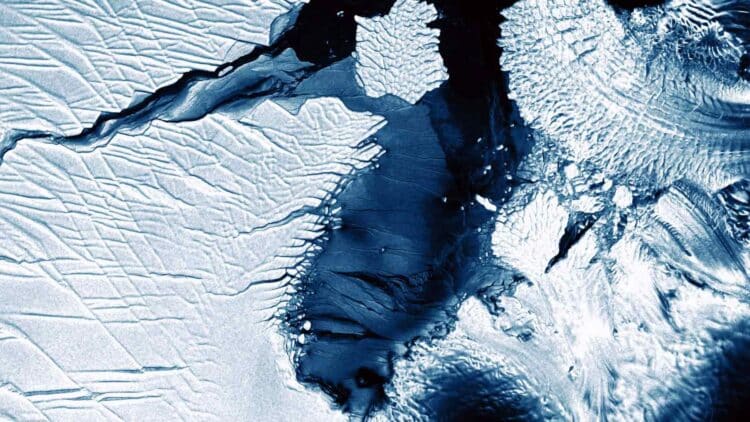It seems that scientists are not only receiving strange signals from space… We are talking about this because experts from NASA and several other research institutions have detected mysterious radio signals below the surface of the ice in Antarctica. And as if that were not surprising enough, what scientists have discovered is causing a great stir in the scientific community. Why? Well, this news could open doors to new areas of study and previously unknown physical theories.
The project responsible for the signal in Antarctica
Before we talk about this discovery itself, we need to understand how it was possible to detect this signal. It all started with a bold experiment called ANITA (Antarctic Impulsive Transient Antenna). Between 2006 and 2016, this mission was one of the most ambitious attempts to better understand cosmic particles. The main focus? Detecting neutrinos, which, in less technical terms, are super-light, virtually massless particles that pass through matter as if nothing were there, without deviating from their path.
And to be able to do all this, ANITA used a detection method never seen before: balloons with radio antennas floating above Antarctica. Of course, the choice of location was not random, especially because Antarctica offers a large amount of ice that serves as an excellent means of detecting high-energy particles that pass through the environment. Throughout the decade that the project operated, scientists collected a large amount of data on these particles.
However, what they did not expect was to find a radio signal coming from an unusual angle and far below the surface of the ice. Why? Well, normally, neutrino-generated signals would have to come from higher angles, close to the horizon. But the signals detected by ANITA were much deeper, about 30 degrees below the surface, a behavior that completely escapes the logic of subatomic interactions.
Where does this signal come from?
Why couldn’t this discovery have been possible? Well, particle physics says that when passing through kilometers of rock, these signals would be absorbed and therefore could not be detected on the surface. However, scientists realized that what they were observing completely defied these predictions.
Early on, scientists even linked this signal capture in Antarctica to neutrinos, but this was later disregarded. This is because the signals detected by ANITA did not match the patterns predicted for neutrinos or any other particles already known. Later, the hypothesis arose that these signals could be caused by tau neutrinos, which are capable of regenerating and producing other neutrinos… but this was also discarded. So we came to a conclusion: the origin of these signals remains a mystery. A mystery so powerful that it could lead to the rewriting of some of the fundamental laws of physics (like this invention from Germany).
It looks like we’re going to need to review our laws of physics
To give you an idea, the signal detected in Antarctica was so out of the ordinary that it left scientists completely intrigued. It was so serious that they paused and reconsidered some principles of particle physics. Now, they are planning new tests, with even more sensitive and powerful equipment. One of them is the PUEO (Payload for Ultra-High Energy Observations), which could provide more concrete answers and, who knows, help us understand once and for all what is happening with these strange signals.
Apparently, the ANITA mission, over the years, has revealed much more than just data on cosmic particles. It ended up raising an essential question: Do we really understand the world around us? It seems that we don’t… And a very good example of this is these polar dinosaurs, recently discovered, also in Antarctica.


